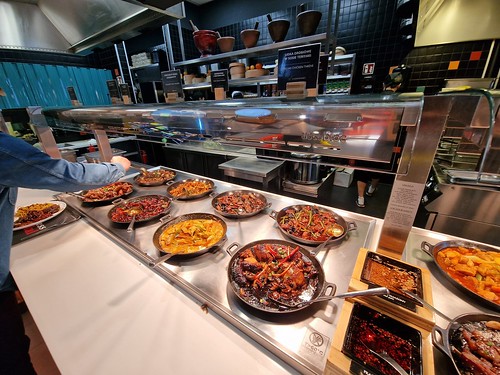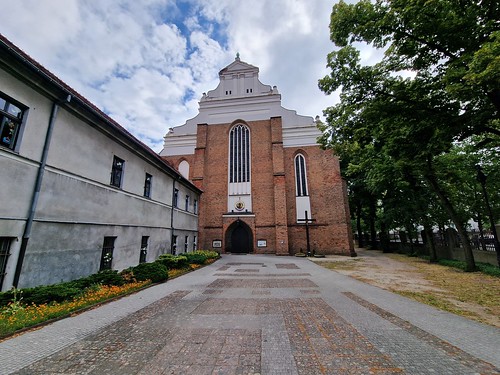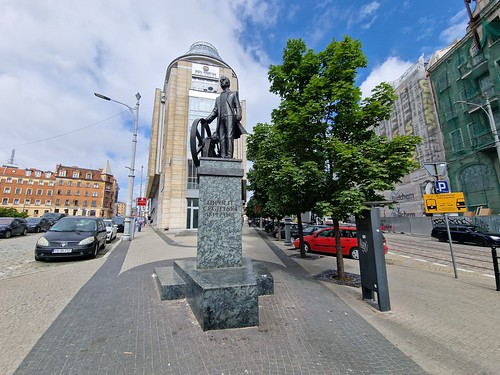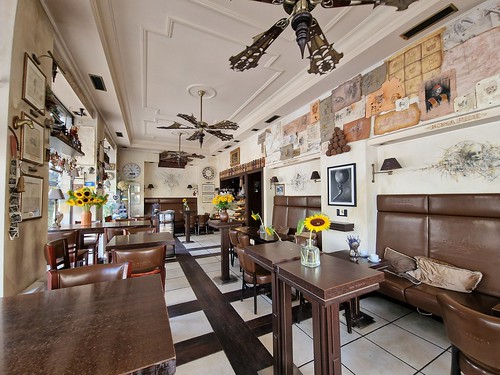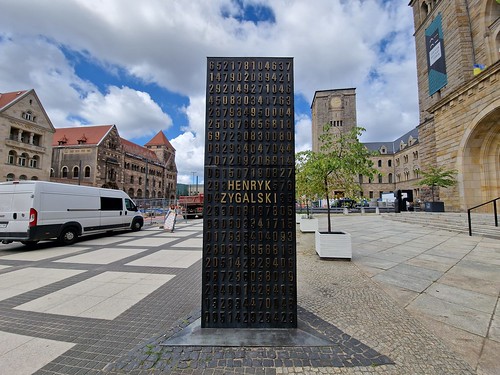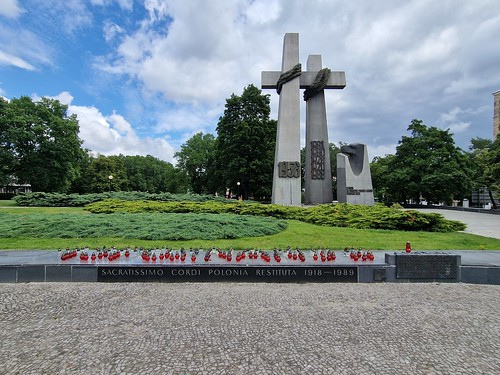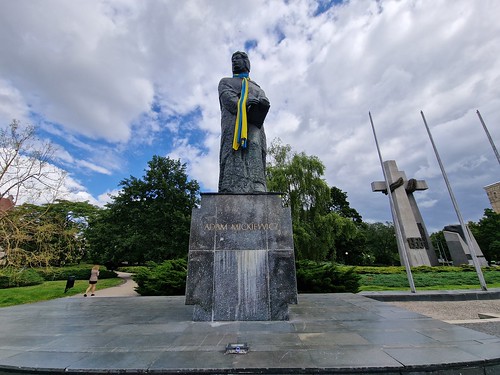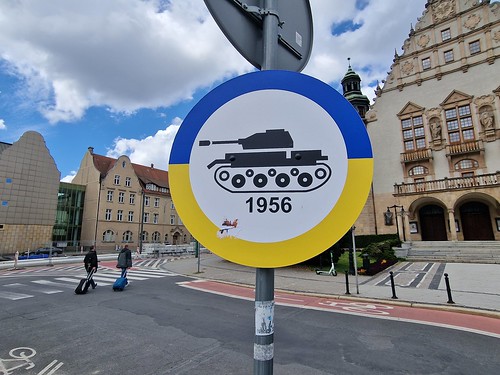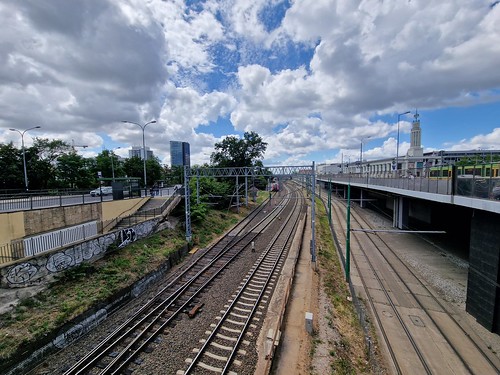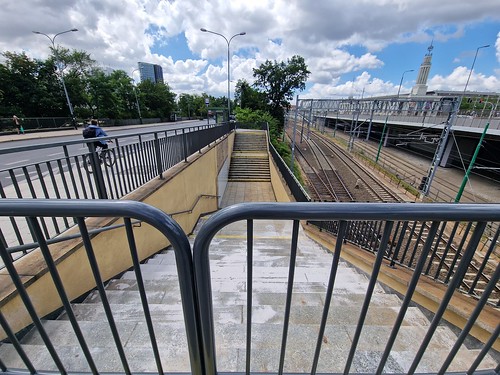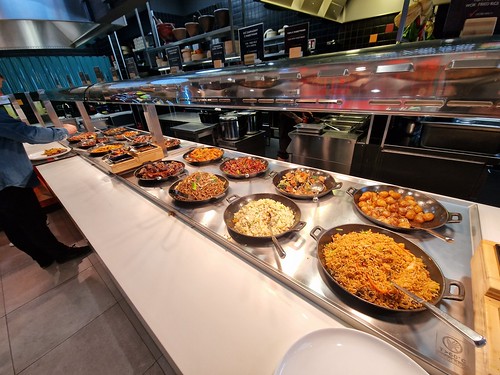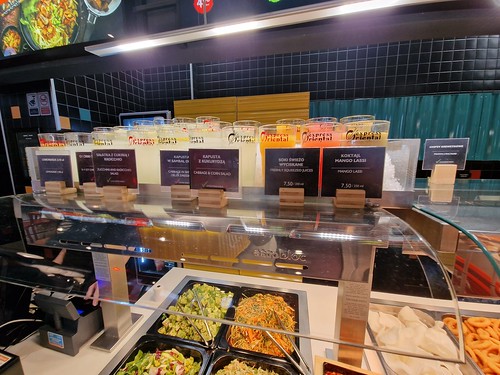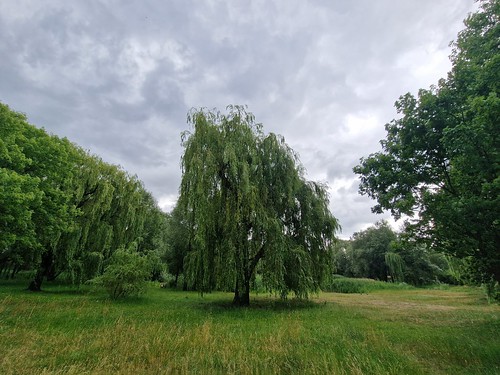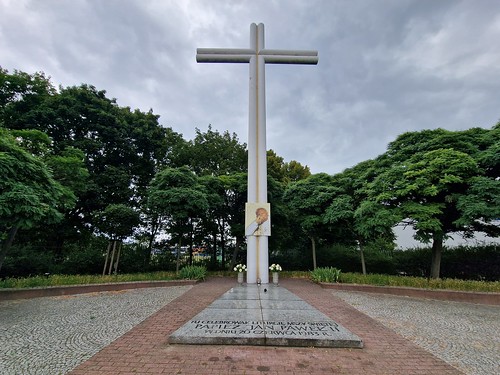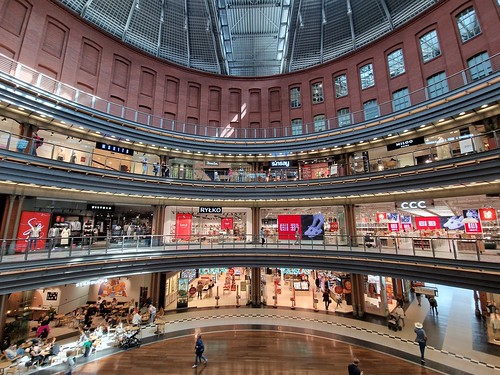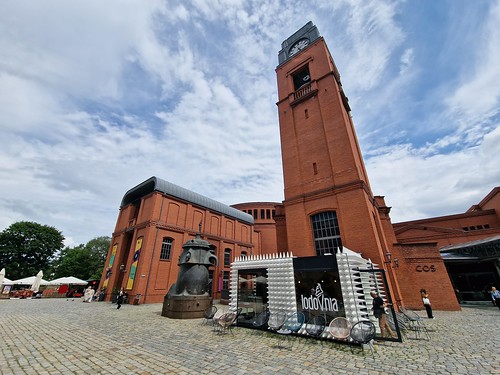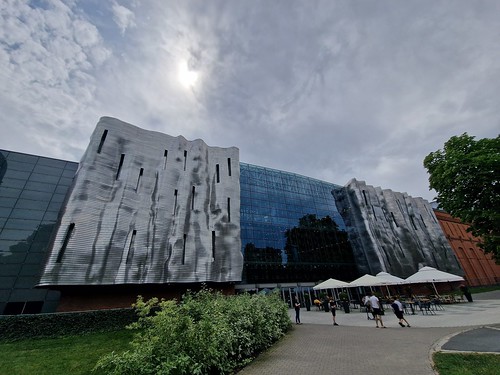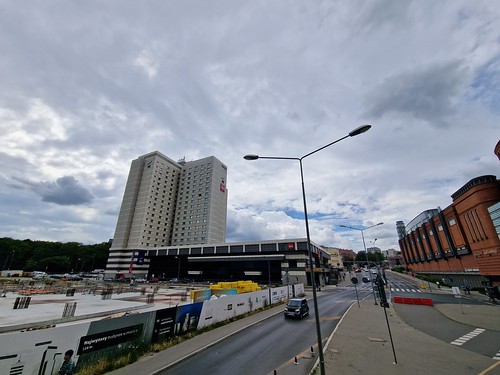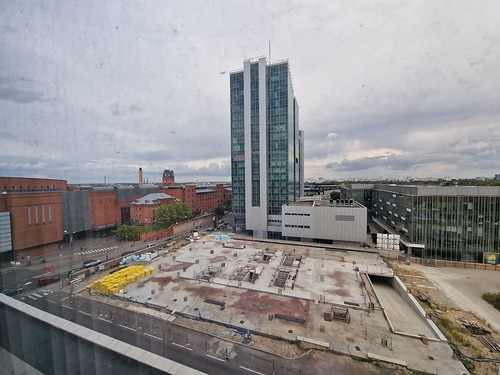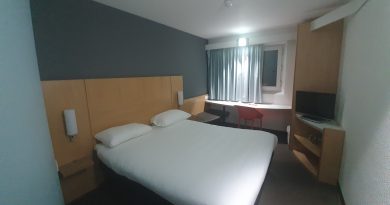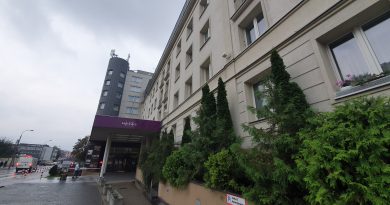Friday : Cheesecake, 1956 Poznan Protests, Express Oriental and a Walk Around the Park
After checking out of my Ibis hotel after a peaceful stay, I went on another little stroll around Poznan, with this being Corpus Christi Church. I learned something new here about host desecration, which is the process of when Jews in the medieval period were accused of deliberately destroying the sacred host. This state of affairs annoyed the Catholic as it involves the body of Christ and all that.

I can’t remember if I saw this image a few weeks ago at the Museu Nacional d’Art de Catalunya in Barcelona, but it’s an example of the desecration. As with many of these things, a lot of the allegations made against the Jews were untrue, designed to cause division in the community or as an excuse to expel the Jewish residents. This is relevant in Poznan as apparently this happened here and where the authorities found the desecrated host, King Władysław Jagiełło decided to build Corpus Christi Church to mark the event.
The church is in active religious use, although isn’t routinely open to the public, but the building isn’t in great condition as can be seen in the first photo. The frontage of the church, as visible in the above photo, is though better.
A statue commemorating the life of Hipolit Cegielski (1813-1868), a local man who was an industrialist and social activist. Krzysztof Jakubik designed the statue and it was installed here in 2009 to mark his contribution to the city, including the foundation of the first Polish newspaper in Poznan, called Gazeta Polska.
As I again didn’t have breakfast at the hotel, I this time went to Da Vinci caffe bar for a little snack.
Rather decadent surroundings, with a friendly welcome from the staff member at the counter.
Cheesecake and latte, a suitably delicious breakfast. That slice of cheesecake is bigger than the photo looks, I probably didn’t need to eat it all.
The city’s Imperial Castle, a slightly odd building was isn’t really a castle at all, it’s more a palace constructed by the Germans in 1910 for Wilhelm II, the last German Emperor and the King of Prussia. It was used as Government offices after the war, but was also designed to be used as a personal flat of Adolf Hitler and substantial amounts of reworking took place in the early years of the Second World War to deliver that. By 1943, they’d given up with that plan, their efforts were being redeployed to stop the Soviet advance on the eastern front.
A maths thing for Nathan and Richard, this commemorates Henryk Zygalski (1908-1978), a mathematician who was born in Poznan and was involved in cracking Enigma. He remained in the UK after the end of the Second World War, teaching maths in a small provincial school. I wonder whether his students were aware of his contribution towards the war effort….
I’m not sure what the two aircraft were doing. Well, obviously they were flying, but beyond that.
As I mentioned yesterday, there’s no shortage of construction work going on across the city. It’s rather lovely to see all this work and investment taking place to improve the infrastructure.
The 1956 memorial is a reminder of the horrors of Soviet control of Poland, when in June 1956 the authorities ruthlessly suppressed a trade union strike. 10,000 soldiers were brought in by the communist authorities, and they massacred 49 civilians during street fighting, including the murder of 13 year old Romek Strzałkowski, with a street in Poznan now being named after him. 28 June is an annual day of remembrance to mark the bravery of those involved with the uprising, which is now seen as an important milestone in the defeat of communism.
In the years that followed, the authorities tried to suppress information about the atrocity that the Soviet and Polish authorities had committed, but following the advent of Solidarity in the 1980s, the truth started to out once again. This enormous memorial was installed here and unveiled on 28 June 1981, which wasn’t an ideal situation for the authorities at the time who most certainly didn’t want it. But, despite their efforts, it went up and 200,000 people were present at the unveiling, including Anna Strzałkowska, the mother of the little boy who had been killed.
That reads ‘Poland Reborn to the Sacred Heart’, with reference to when the country regained its independence in 1918.
I mentioned yesterday about how in 1940 the Germans destroyed the first statue in Poland of Adam Mickiewicz. The Poles didn’t like that, so in 1960 they built this much larger statue of him instead, designed by Bazyli Wojtowicz. Adam, if I might call him that, is today wearing the colours of Ukraine, which seems very fitting in this square, which is now named after him.
In 1956, the Soviet tanks rolled into Poznan, like they do today in Ukraine. People cannot be subjugated. Anyway, away from politics…
Designed by Edward Furstenau, this building was constructed between 1905 and 1910 to be used by the Prussian Royal Academy, but it’s today used by the Adam Mickiewicz University for lecture and conference halls.
The railway tracks, and I was intrigued to see why they had closed off the underpass.
I’m not entirely sure why I was so intrigued by this. Sometimes I fear this blog veers into the irrelevant. Actually, nearly every post veers off on that course, but there we go.
Dworzec Letni, or Summer Railway station, which was built by the Prussians as a private railway station for Emperor Wilhelm II. Known then as Kaiserbahnhof, the Polish railways in 2011 connected the building back up as part of the station and it goes down to the platform still. They’re put some information boards up on the building to note the work that took place.
After all that history, I needed food, so I went for Express Oriental.
It’s self-service and customers pay at the end depending on how heavy their plate is, a concept that seems more common in mainland Europe than in the UK.
It looked suitably delicious and judging by the number of customers, it was also quite popular which seemed a good sign. Incidentally, most of the other customers were using chopsticks, but I’m not highly trained in using those, so I stayed with the knife and fork that I’m better trained on.
That fried chicken with almonds looked particularly moreish. However, I had to show self-control, which is a little rare for me, as I didn’t want to break the scales with the weight of my plate.
Mango lassi, I had to have that!
I accept my presentation here isn’t great, but it’s not easy to place food delicately on the plate in this sort of set-up. The food and drink cost just over £5, which I thought was entirely reasonable. I also liked the size of the plates, they were like Alan Partridge’s big plate.
This slightly complex piece of street art is certainly very different in terms of its creation and it’s by Sten & Lex of a random person they knew. It’s a combination of paper which is partly cut out and then painted, creating this unique effect. There’s more of their work on their web-site at https://stenlex.com/category/en-plein-air/.
Our Lady of the Queen church, constructed between 1904 and 1907 as a Protestant church, but it became Catholic following the end of the Second World War.
It’s a pleasant little church and there’s a market behind it, mostly selling fruit and vegetables, so I didn’t linger there.
Poland has become very enthused with these parcel delivery boxes, which I know are common across the world, but they seem more used here. I took a photo of this as there’s actually another one about fifteen metres down the pavement, but it’s got green plants on the side to camouflage it, but it’s an indication of how much they’re used.
I had a little walk to John Paul II park (Park Jana Pawła II w Poznaniu) and was pleased with the state of the weather and it rained a little soon after this. I’m glad the days of hot weather are gone, and as loyal readers (or the loyal reader) will note, the blog posts get longer when it’s not too hot.
I had a meander around, it’s a decent park which was only created in 1970, mostly on top of the debris they’d dumped there from Poznan’s war damage.
There’s a lake and numerous walking areas, all rather pleasant.
The park was named after the Pope in 1983 following his visit to Poznan on 20 June of the same year. A slightly staggering one million people came out to see him, which is an impressive number by any standard, although there was a political element to proceedings then, as well as religious. On the same day he beatified Urszula Ledóchowska and this memorial was put up to mark his visit.
A memorial to Cyryl Ratajski (1875-1942), the Mayor of Poznan who famously refused to give the keys to the city hall to the Germans when they invaded the city. This rather glorious memorial was installed here in 2002 in front of the city’s central financial building.
Excuse all the photos, but this is an outstanding conversion of a former brewery into a shopping centre. Stary Browar has two main wings and over 200 shops and restaurants. There are numerous art installations throughout the site, but there will likely be more about this shopping centre over the next few days on this riveting blog.
The reason for that likely burst of more posts about the shopping centre is that I’ve moved hotels to the Ibis which is located opposite.
It’s an odd set-up, the Novotel and Ibis share the same building, the same reception and seemingly much else. Nice room though, with desk, which is lovely. The windows don’t open, but the room is freezing cold which I like, so no complaints on that front. The staff members were friendly and helpful, it feels like a well managed hotel. I haven’t got anything to complain about yet anyway.
What a lovely gesture and the peanuts were delicious. Very much appreciated.
And the view from the hotel window. All really rather lovely.

